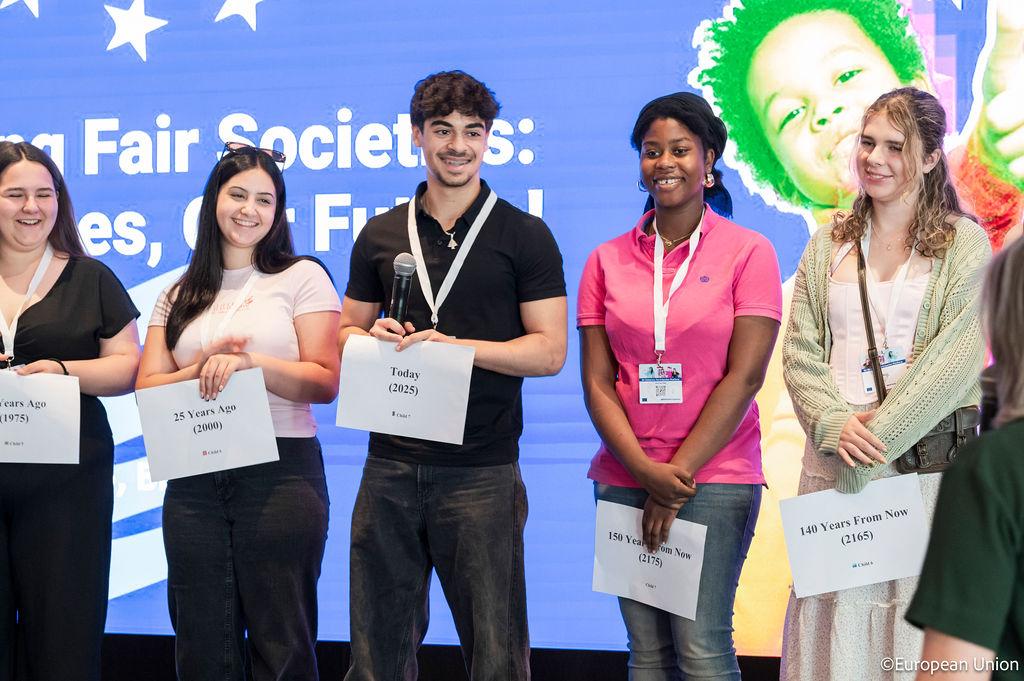
The theme of our big June 2025 meeting in Brussels was ‘Building Fair Societies – Our Voices, Our Future,’ so intergenerational fairness was part of that.
But what is intergenerational fairness and why should it matter to children and teenagers?
What is intergenerational fairness?
People of all ages – babies, children, kids, teens, adults, and elderly people – are living now, at the same time. And the choices we make today will affect all of them.
Did you know that less than half of Europeans believe that society is fair and equal? (source Eurobarometer, 2022)
We’re facing big challenges like climate change, money problems, and aging populations. If we don’t think ahead, some generations might get stuck with unfair consequences — like a polluted planet, fewer opportunities, or big debts.
That’s what intergenerational fairness is all about: making sure life is fair not just for us now, but for all future generations too, including those not yet born!
What is the European Commission doing?
Since February 2025, the Commission is working to create a strategy that listens to and considers everyone — young and old, to help build a better future for all.
Which is why they have been asking to hear from everyone through an online consultation and meetings with EU citizens. This will help the European Union build a future that’s cleaner, fairer, and full of possibilities for every generation.
More on the Strategy for intergenerational fairness
Getting our young members involved
| “We want to speak for all the children who want a better future. We believe young voices matter and today, we are proud to use ours.” |
Erica and the EU Policy Lab team joined our meeting and ran an interactive workshop with our young Platform members to help get everyone into the ‘intergenerational’ mindset.
This sent children on a voyage both backwards and forwards in time (by 150 years in each direction!) – to advocate for those different generations and see how to build on the past and for the future.
Children also received a copy of the ‘Futures Thinking Playbook’. It’s a fun, hands-on guide to help young people explore what the future could look like—and how they can help to shape it.
Throughout the rest of the meeting, children discussed different topics that were important to them, thinking about what could be done to improve things for both today’s children and those of tomorrow.
They put these hopes, dreams and proposals into a Call to Action which was presented to EU and national decision-makers.
